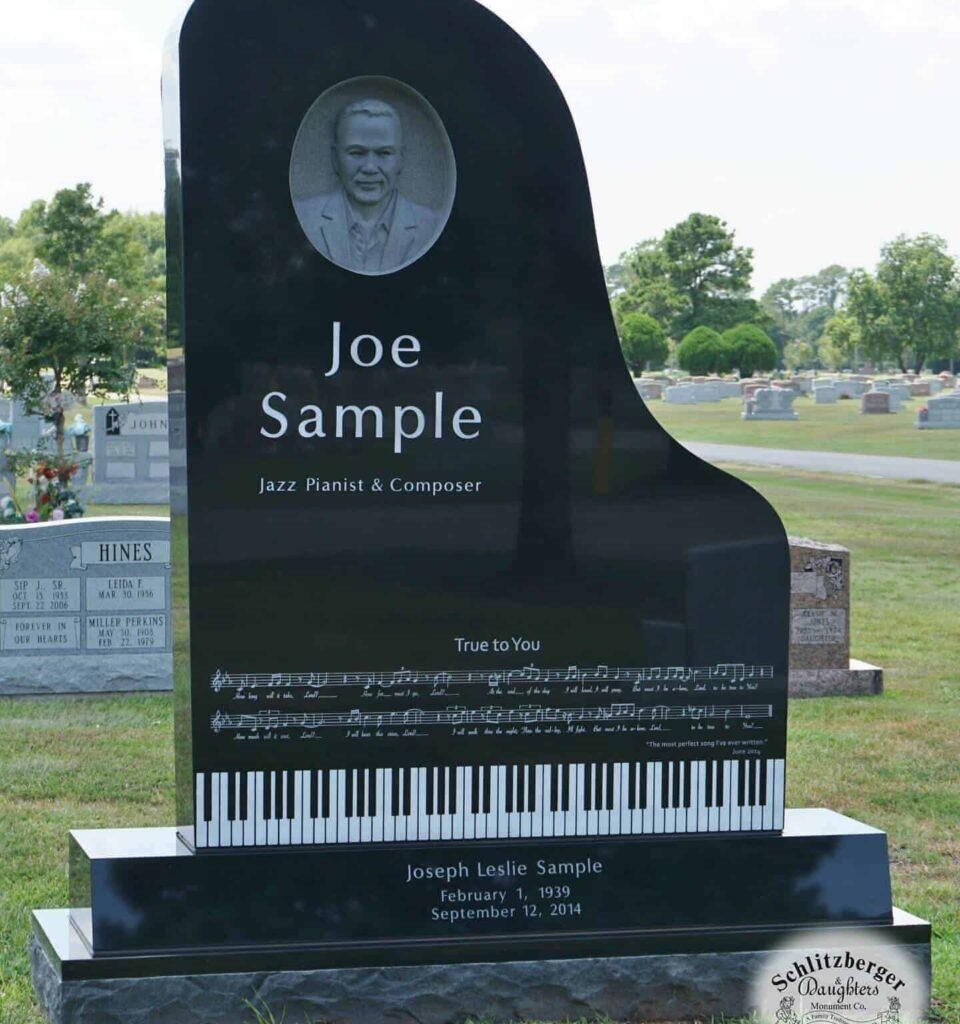Monuments & Architecture
Cemeteries are the most unspoiled resource of historic architecture, mirroring the urban trends of their times. There are many types of funerary architecture, but the ones featured here are some of the most well-known.
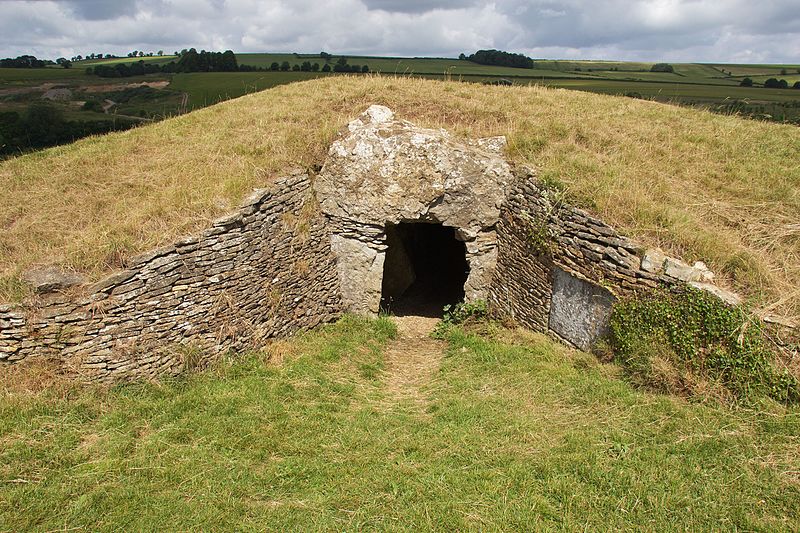
01
Tumulus
The tumulus is one of mankin’s oldest burial monuments, dating back to 4,000 B.C. The foundation of mcient tumulus-style monuments are assemblages of large rocks, known as megaliths. A megalith is transformed into a tumulus with the addition of rubble or earth to form a large mound.
02
Egyptian Revival
Egyptian Revival architecture is the easiest one it identify with pyramids being the most characteristic. Almost every Egyptian Revival tomb is adorn with a pair of vulture wings sprouting from a circle (the sun) and flanked by twin cobras (death). Above the entry is an element called cavetto cornice.
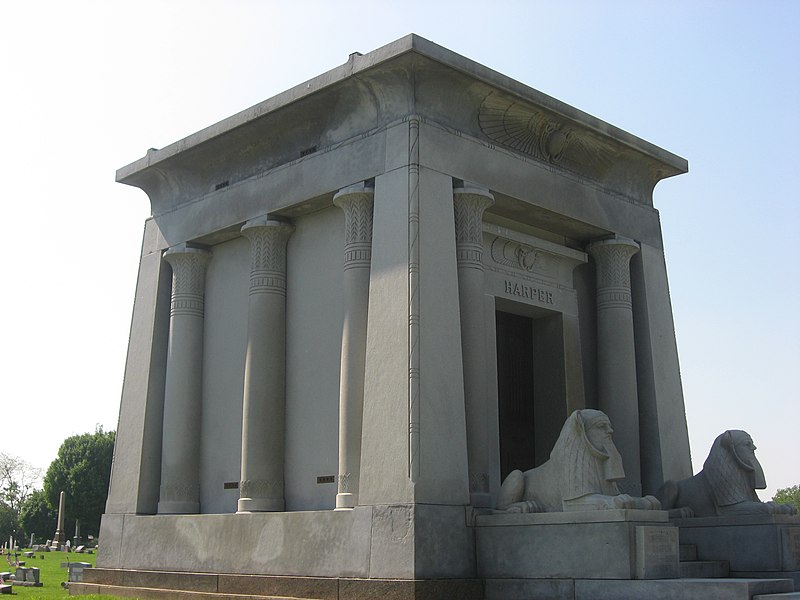
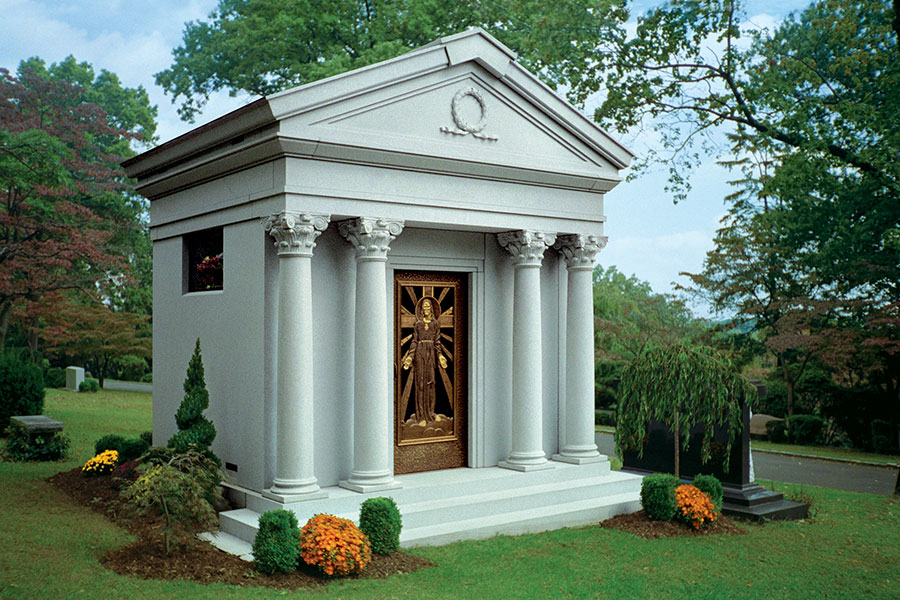
03
Classic Revival
The most common type of cemetery architecture is Classical Revival. It is easy to identify by its columns and column capitals: Doric, Tuscan, Ionic, Corinthian, and Composite. These Greco-Roman elements have a boxy look, with added design motifs such as acanthus foliage or rounded scroll shapes.
04
Romanesque
Romanesque architecture is most widely characterized by rounded arches and intricately carved ornamentation. These ornaments are primarily used on column capitals, around doors and windows, and on moldings.
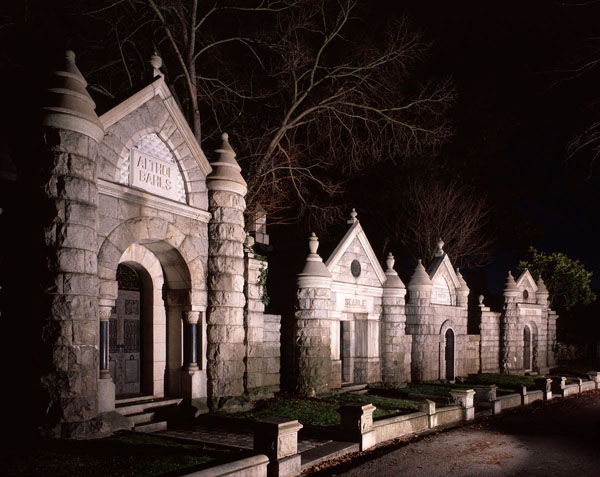
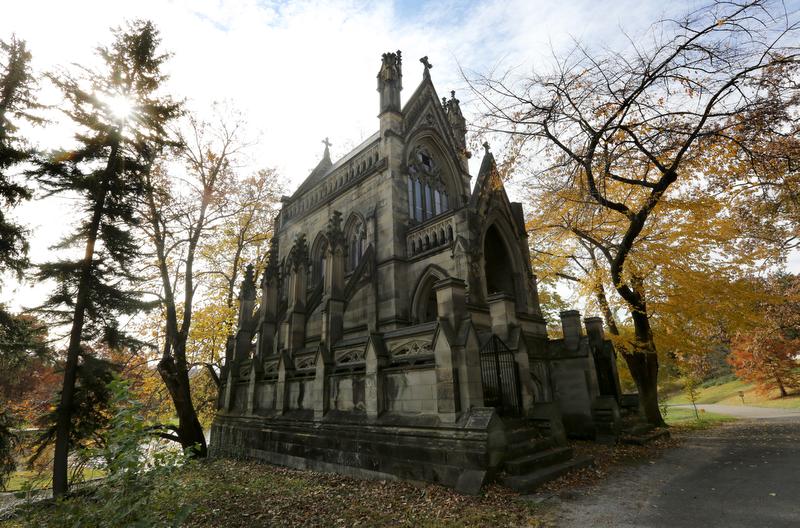
05
Gothic
Perhaps no style of architecture is so closely associated with cemeteries as Gothic. Identified by its vertical emphasis, pointed arches, and heavily ornamented spires; these structures are the first original Christian architecture, as the pointed shape is meant to invoke the image of hands clasped in prayer.
06
Art Nouveau
Emerging at the end of the 19th Century, this naturalistic type of architecture was meant to echo the forms we see in nature, or what we call fractals. This style is often found on mausoleums, featuring curved, asymmetric designs.
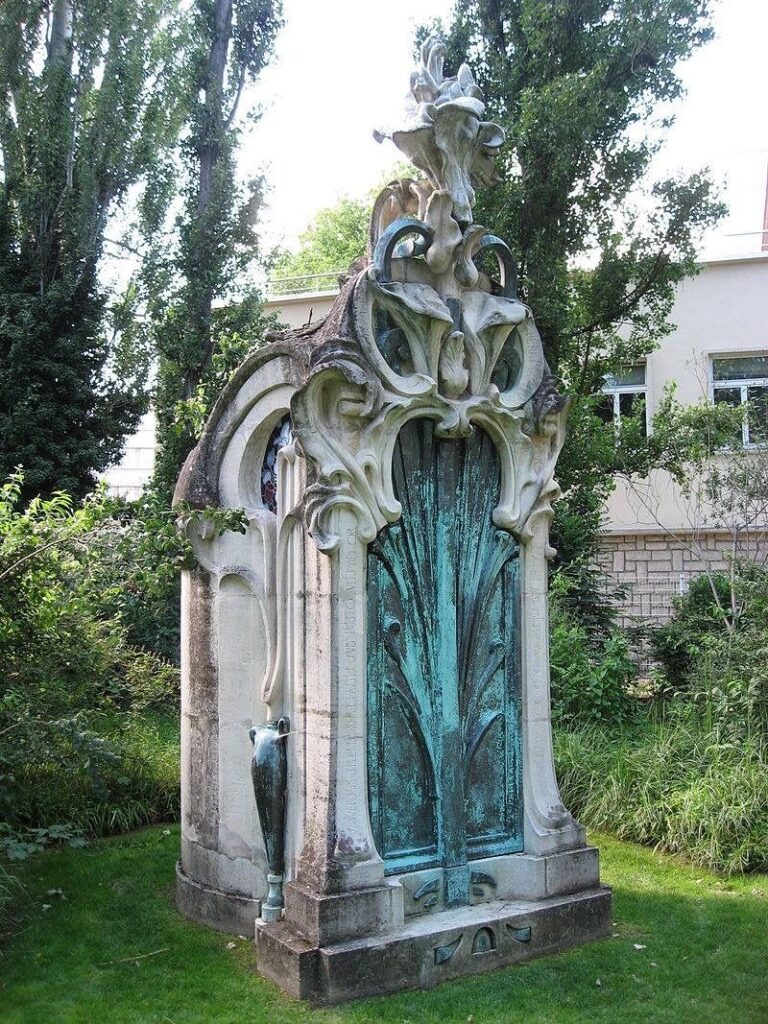
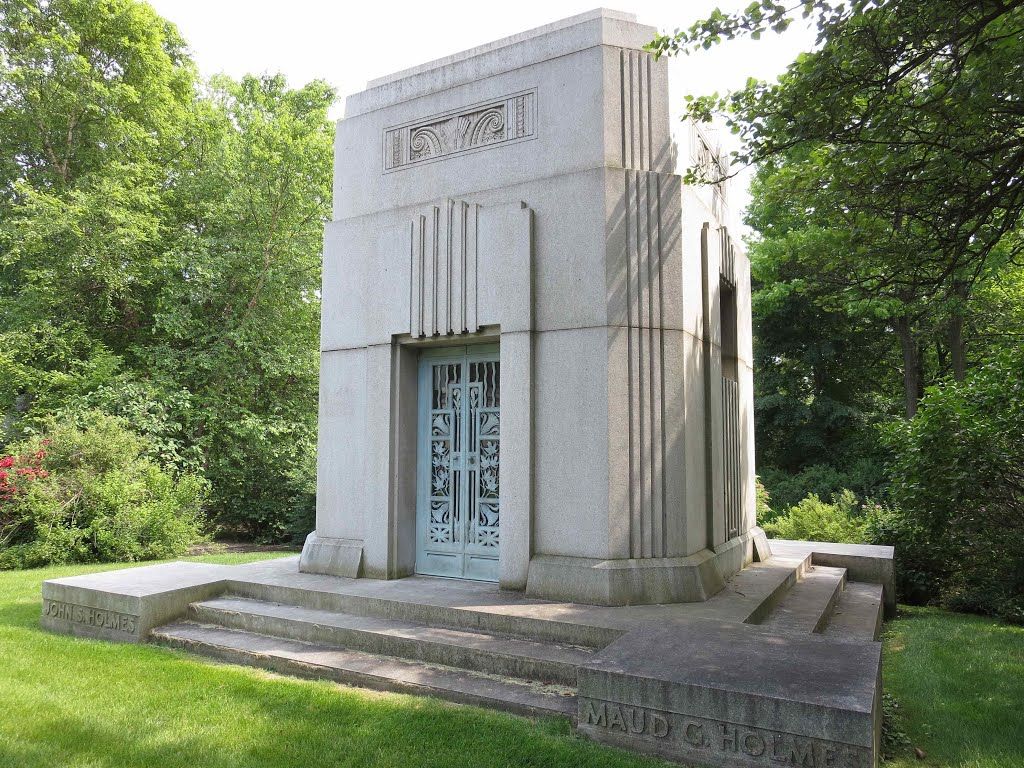
07
Art Deco
One of the last truly decorative styles of architecture was Art Deco. Its streamlined elements are are defined by its a smooth, sleek look, stylized with clusters of lines and geometric patterns. This motif was very popular in the 1930s and could be found on everything from small-scale objects to large skyscrapers.
08
Modern
Modern Architecture is a catch-all term that describes monuments from the mid 20th century to the present. Common components include hard, clean lines, utilitarian structure, and a variety of shapes.
With the assistance of lasers, elaborate designs can be etched into the surfaces, but there is an absence of ornamentation that is a staple of older architecture styles.
